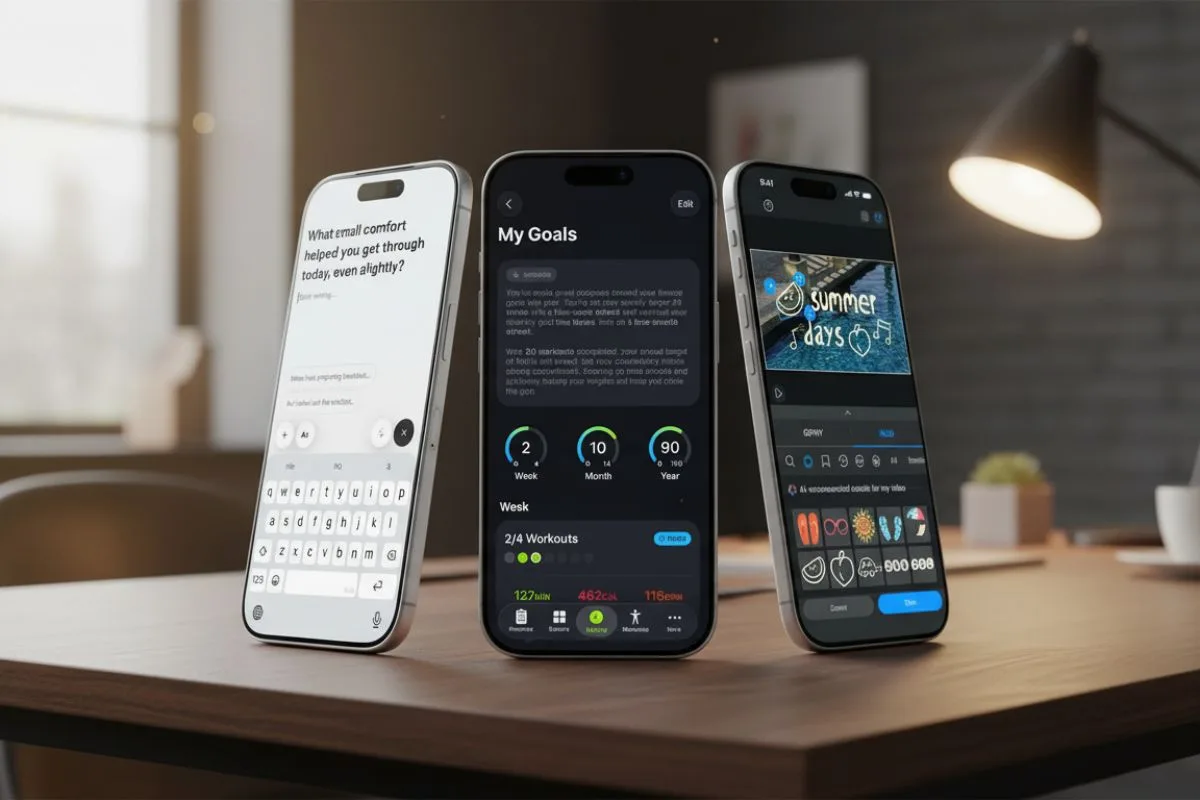Introduction
Apple today made its Foundation Models framework broadly available to developers, letting apps tap the on-device large language models that power Apple Intelligence. The move — part of iOS 26, iPadOS 26 and macOS 26 — lets developers build features that run offline, keep data private, and avoid ongoing inference costs by using Apple’s local models.
Why it matters
By opening its native models to third-party apps, Apple shifts AI from a cloud-first add-on to a private, device-centric capability. That could speed up intelligent features across fitness, productivity and wellness apps while keeping sensitive user data on phones and Macs. Developers and regulators will watch closely — the design balances convenience, performance and privacy.
What the Foundation Models framework offers developers

Apple’s developer docs say the framework exposes the same on-device large language model that underpins Apple Intelligence, with APIs for text generation, summarization, instruction following and multimodal inputs. Apps can call the model locally for features such as workout plans, journal summaries, message triage, or richer app assistants — all without sending content to Apple’s servers.
Apple’s official announcement highlights three selling points: privacy (on-device inference), offline availability, and no inference fees — meaning smaller studios and indie devs can add advanced AI without recurring cloud costs. Apple also published sample code and guidelines to help developers integrate model calls efficiently.
Early use cases developers are shipping
Several apps already demo Foundation Models features. Fitness apps can turn plain-language prompts into structured routines; journaling apps summarize emotional trends and suggest coping prompts; productivity tools auto-draft briefings or extract action items from notes. TechCrunch and Apple’s newsroom roundups show a wide early pipeline across health, finance and creative apps.
Performance and device support
Apple designed the models to run on recent iPhone, iPad and Mac silicon. While smaller “nano” variants power simple tasks on older devices, the most capable models require newer chips and more RAM. Apple’s documentation lists runtime limits and energy-use guidance so developers can tune models for speed and battery life. Expect developers to offer feature fallbacks for older phones.
Privacy and regulatory considerations

Apple’s privacy-first pitch reduces server roundtrips, but regional regulators will still scrutinize how models are used. Lawyers and policy analysts point out that even local inference can implicate consumer protections — for example when models infer sensitive health or financial status from user data. The EU and other jurisdictions may evaluate transparency, data minimization and rights-to-explanation for model-driven decisions. Apple’s approach gives it a strong privacy message, but it is not a regulatory shield.
Developer cost, competition and strategy
Apple’s promise of “free” inference is strategic: it lowers barriers for app makers and strengthens the platform against cloud-first rivals. Competitors like Google and OpenAI also offer on-device and tiny model SDKs, but Apple’s tight hardware–software integration and App Store reach give its framework unique distribution advantages. Analysts expect faster plateaus.
What to watch next
- Device coverage: which iPhone/iPad/Mac models can run which model sizes.
- Developer adoption: how quickly major apps ship offline AI features and fallbacks for older devices.
- Regulatory response: how privacy and competition watchdogs treat on-device model use and App Store distribution rules.
Bottom line: Apple’s Foundation Models framework opens a new chapter for mobile AI — one where sophisticated language and multimodal features can run privately, offline and without continual cloud bills. For developers it’s an invitation to reimagine app experiences; for users it promises smarter features with stronger local privacy guarantees.
Frequently Asked Questions
What is Apple’s Foundation Models framework?
It’s an SDK that gives developers access to Apple’s on-device large language models (the core of Apple Intelligence) so apps can perform local AI tasks like summarization, generation and multimodal understanding.
Do features using Foundation Models require internet?
No — one key benefit is offline inference. Apps can run model calls locally so many features work without a network connection.
Will it cost developers to use Apple’s models?
Apple says on-device inference through the framework avoids per-call inference fees, though developers still bear integration and testing costs. Heavy-duty server workflows remain separate.
Which apps can use it today?
Apps on iOS 26, iPadOS 26 and macOS 26 can use the framework. Apple highlighted early examples in fitness, journaling and productivity apps.
Are there privacy safeguards?
Yes — the models run locally by design, reducing data transmission to Apple; developers must still follow platform privacy rules and be transparent about sensitive inferences.
Author note: I’m a tech reporter summarizing Apple’s Foundation Models framework release and developer docs. The article draws on Apple’s Newsroom and Developer pages plus coverage from TechCrunch and MacRumors. I used cautious language where developer adoption and regulatory reviews are still unfolding; I’ll update if Apple publishes further guidance or policy changes. Apple

